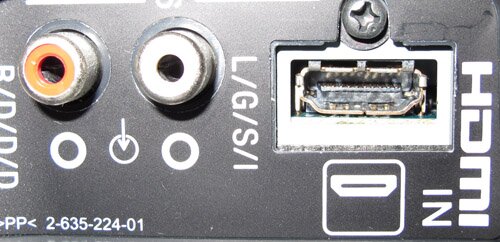The rise of streaming media services such as the BBC’s iPlayer and downloadable content means more and more people are looking to connect their computers to their TV so they can view it sat on their sofa rather than hunched over a computer or sat at a desk.
There are a number of different options for connecting your PC depending on what ports you have available. Listed below are the most common options for picture and sound.
It’s also worth noting that if your PC doesn’t come with one of these connections you can buy after-market cards to fit to your PC which have the relevant port.
Picture
Some connections include both video and audio signals so you get pictures and sound, but two of the most common options don’t, and you may still want to have separate connections to allow things like digital audio into a separate device, such as an amplifier (not covered here).
VGA

The VGA port is probably the most popular type of display connector that is available on PCs. The quality is inferior to DVI, so if you have both, use the DVI port, and fewer TVs are likely to have a connector, but it’s likely to be the port present on any older PCs.
Assuming you have a port on your TV (it’s usually used for a PC source) you just need a standard VGA cable to connect to your TV. This port does not carry sound so you’ll need a separate cable to carry sound depending on what your PC and TV offer. See the Sound section below.
DVI

DVI is the replacement for the older VGA connector and is typically present on most new PCs. This is a digital connection so offers higher quality than VGA, so use this one if you have both.
Few TVs have a DVI port to plug in to, but DVI-to-HDMI cables, which have a DVI connector on one end and an HDMI connector on the other, are readily available.
DVI ports don’t carry sound, so you’ll need a separate cable to carry the audio signal. See the Sound section below.
HDMI

HDMI is the replacement for the older SCART connection used to connect most entertainment devices to modern TVs. It’s the primary cable used for high definition signals. HDMI ports are slowly becoming commonplace on newer PCs and are the best way to connect to your TV if available.
Aside from a good range of compatibility with modern TVs, HDMI also carries sound so you don’t need two cables. HDMI is capable of carrying multi-channel surround sound signals. Having said that, not all graphics cards support sound output via HDMI, so, as you can see above, sometimes you need to use an RCA (or more commonly a headphone-to-RCA) cable to connect the sound separately.
Other Options
There are a a couple of other options, although they’re typically older formats or specialist and are unlikely to be fitted to your PC as standard, these include composite video and S-Video.
Sound
Depending on your video connection you may require a separate cable to carry sound, most commonly this means one of the two options below, which don’t support multi-channel surround sound. There are also a few other options, such as S/PDIF.
TRS (3.5 mm headphone jack)
The standard 3.5 mm headphone socket is more accurately called a TRS socket. On your PC it’s what your speaker/headphone socket is. TVs often use this to carry sound for DVI or VGA, all you need is a male-to-male cable (sometimes included with the speakers on your PC) plugged into your speaker socket on the PC and the socket that accompanies whichever video connector socket your are using on your TV.
RCA
RCA connections are the white and red connections commonly found on stereo equipment. They’re often teamed with a yellow composite video connector. Typically you won’t have RCA connections on your PC, but you can get 3.5 mm headphone (TRS) to RCA cables which will then plug in to your TV.
